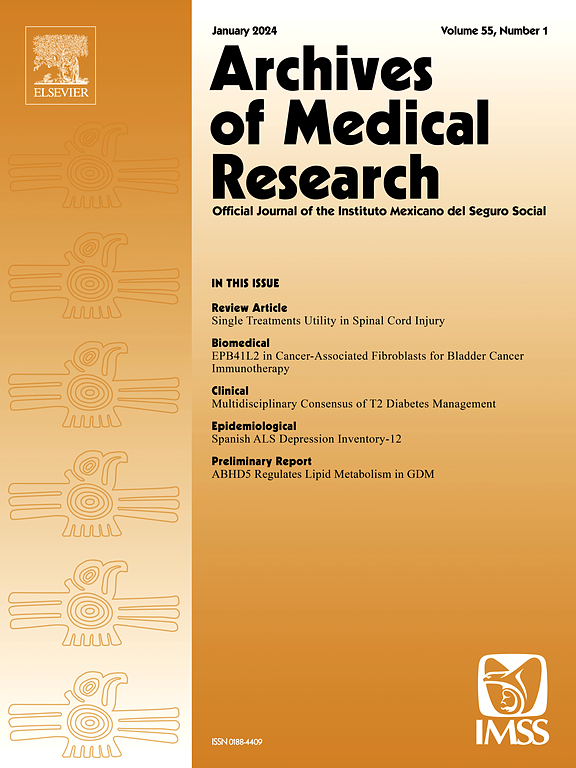墨西哥SARS-CoV-2的基因组多样性和地理分布:来自4年基因组监测的见解
IF 3.4
3区 医学
Q1 MEDICINE, RESEARCH & EXPERIMENTAL
引用次数: 0
摘要
截至2024年9月,墨西哥报告了超过760万例COVID-19确诊病例和334785例死亡。基因组监测至关重要,全国已对94799个SARS-CoV-2基因组进行了测序,其中38.5%由墨西哥基因组监测联盟(CoViGen-Mex)完成。目的分析墨西哥九波SARS-CoV-2大流行的基因组多样性和地理分布,重点研究第七至第九波。方法分析2020年2月至2024年9月的94,799例SARS-CoV-2基因组数据。对流行率在5%以上的子谱系进行了跟踪,并利用多样性指数和统计模型对其时间和区域趋势进行了评估。结果996个亚系中,72个亚系患病率大于5%,33个亚系患病率超过10%。每一波都以占主导地位的亚谱系为特征,其中一些在局部出现,并在一次或多次浪潮中盛行,但后来被新的浪潮所取代。在所有的波浪中都发现了区域差异,这是由人口密度、流动性和变异引入驱动的。结论我们的研究结果强调了SARS-CoV-2在墨西哥的动态演变,当地相关变异的出现,以及在向流行状态过渡期间进行持续基因组监测以指导公共卫生战略的迫切需要。本文章由计算机程序翻译,如有差异,请以英文原文为准。
Genomic Diversity and Geographic Distribution of SARS-CoV-2 in Mexico: Insights From 4 Years of Genomic Surveillance
Background
As of September 2024, Mexico had reported over 7.6 million confirmed cases of COVID-19 and 334,785 deaths. Genomic surveillance has been essential, with 94,799 SARS-CoV-2 genomes sequenced nationwide, 38.5% by the Mexican Consortium for Genomic Surveillance (CoViGen-Mex).
Aims
Analyze the genomic diversity and geographic distribution of SARS-CoV-2 across Mexico’s nine pandemic waves, with an emphasis on the seventh to ninth waves.
Methods
Data from 94,799 SARS-CoV-2 genomes spanning from February 2020 to September 2024 were analyzed. Sublineages with a prevalence of at least 5% were tracked, and their temporal and regional trends were evaluated using diversity indices and statistical models.
Results
Of the 996 sublineages identified, 72 had a prevalence greater than 5%, and 33 exceeded 10%. Each wave featured dominant sublineages, some of which emerged locally and prevailed during one or more waves, but were later displaced by new ones. Regional differences were identified in all waves, driven by population density, mobility, and variant introductions.
Conclusions
Our findings highlight the dynamic evolution of SARS-CoV-2 in Mexico, the emergence of locally relevant variants, and the critical need for sustained genomic surveillance to guide public health strategies during the transition to an endemic state.
求助全文
通过发布文献求助,成功后即可免费获取论文全文。
去求助
来源期刊

Archives of Medical Research
医学-医学:研究与实验
CiteScore
12.50
自引率
0.00%
发文量
84
审稿时长
28 days
期刊介绍:
Archives of Medical Research serves as a platform for publishing original peer-reviewed medical research, aiming to bridge gaps created by medical specialization. The journal covers three main categories - biomedical, clinical, and epidemiological contributions, along with review articles and preliminary communications. With an international scope, it presents the study of diseases from diverse perspectives, offering the medical community original investigations ranging from molecular biology to clinical epidemiology in a single publication.
 求助内容:
求助内容: 应助结果提醒方式:
应助结果提醒方式:


